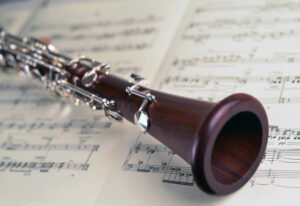 If you have gone to any music store with the intention of purchasing or renting a clarinet, you may be aware that clarinets are made from either plastic or wood. The material an instrument is made out of has many effects on how it sounds and how one needs to care for it. In this article, I will be going through two major distinctions between plastic and wood clarinets so you can feel best prepared for your clarinet lessons in Seattle!
If you have gone to any music store with the intention of purchasing or renting a clarinet, you may be aware that clarinets are made from either plastic or wood. The material an instrument is made out of has many effects on how it sounds and how one needs to care for it. In this article, I will be going through two major distinctions between plastic and wood clarinets so you can feel best prepared for your clarinet lessons in Seattle!
Important Note! Most music stores will let you know, but I want to emphasize the fact that wood clarinets are not meant for beginners. Most intermediate students will also not be ready for wood clarinets. I strongly recommend that students not consider using a wood clarinet, unless there is no other option, until they are in the last year or two of high school at the very earliest. Most, if not all, clarinet teachers in Seattle will surely agree with this, too.
Instrument Care for Your Clarinet
The most important difference to know between plastic and wood clarinets is how to best care for them. This is a huge factor in why wood clarinets are not recommended for beginners or intermediate players for their clarinet lessons.
The way to care for plastic clarinets is very straightforward. As with all plastic or wood wind instruments, one must run a cotton or silk swab through the instrument (tip: never run it through the mouthpiece, as it will deteriorate the fine tuning of the mouthpiece!) after every single playing session. This will keep the inside of the clarinet clean and prevent anything from limiting its playing potential. Outside of that and regular instrument checkups (once a year), plastic clarinets do not require much special care.
Wood clarinets, and any wind instrument made from wood for that matter, are very different. Being made from wood adds a significant weakness: it has the potential to crack. This is a terrifying scenario that should be avoided at all costs, as in many cases it makes the instrument unplayable or is expensive to repair. With wood clarinets, which tend to be more expensive than their plastic counterparts, this is a definite disadvantage to owning one. This can be prevented with the right care, however.
Sound of Wood vs Plastic Clarinets
The biggest boon to playing a wood clarinet is that the sound quality tends to be significantly better. With plastic clarinets, there is a minor shrill and somewhat fake-sounding quality to the sound it produces, which affects about 10-15% of their overall sound production. This does not affect beginner and intermediate students much because they are likely working through creating good sound quality themselves anyways.
This affects advanced players significantly because, even if they are approaching good sound quality production exactly as they should, they may not be achieving their highest quality sound potential with plastic instruments. On top of this, wood instruments tend to have a different resistance quality about them. This makes them slightly more difficult to play, which beginners and intermediate players may have a hard time with.
It is for these two reasons that I recommend wood clarinets for older students in their clarinet lessons in Seattle and plastic clarinets for students who are just starting with music lessons.
Contact us today to find out more about our teachers! They can either come to your home to teach or can also provide online music lessons. Our virtual music lessons are taught by local music teachers who plan their lessons to suit your child.
By Brian Schappals
